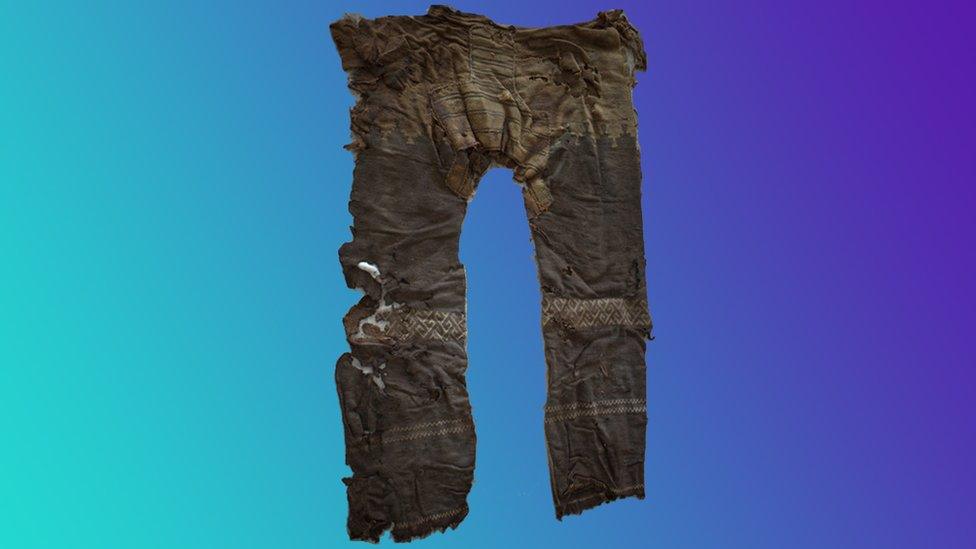Archaeology: Scientists discover how the world's oldest pants were made!
- Published
- comments

This pair of pants - approximately 3,000-years-old - is thought to be the oldest ever found
Some of you may be fans of vintage fashion, but these trousers are taking it to the extreme.
Back in 2014 a group of archaeologists discovered what is believed to be the oldest pair of trousers in the world!
The wool garment found in China was made between 3,000 and 3,300 years ago.
Now a team, which includes archaeologists and fashion designers, have studied them and discovered they used several innovative textile-making techniques which are still used on trousers today.
An excavation of a tomb in the Tarim basin in Western China in 2014, revealed a mummified body of man wearing trousers with an axe - indicating he was probably a warrior.
A special process, called radiocarbon dating, showed the clothes were made between the thirteenth and tenth centuries BC, making them the oldest known trousers in the world.
At that time both men and women would have worn skirts and capes, so it is believed that the trousers were worn especially for horse riding.
Now the team led by Mayke Wagner of the German Archaeological Institute in Berlin have found three different textile techniques were used on the one garment.
These include twill, a type of weaving which is very durable, and tapestry which was used to create a thicker piece of material at the knees.
The researchers even reproduced the trousers and the rest of the outfit worn by the horseman to study it further
Amazingly jeans today are still manufactured using twill - suggesting today's pants aren't that different to the trousers 3000 years ago.
The researchers also think that the variety of techniques used to make the trousers may have come from different places across Asia, as herders had to move across the land and would pick up new techniques to make their garments.
"A diversity of textile techniques and patterns of different local origins, traditions, and times merged into something new in this garment," Wagner told Science News.
- Published12 January 2022
- Published7 July 2021
- Published7 February 2021
